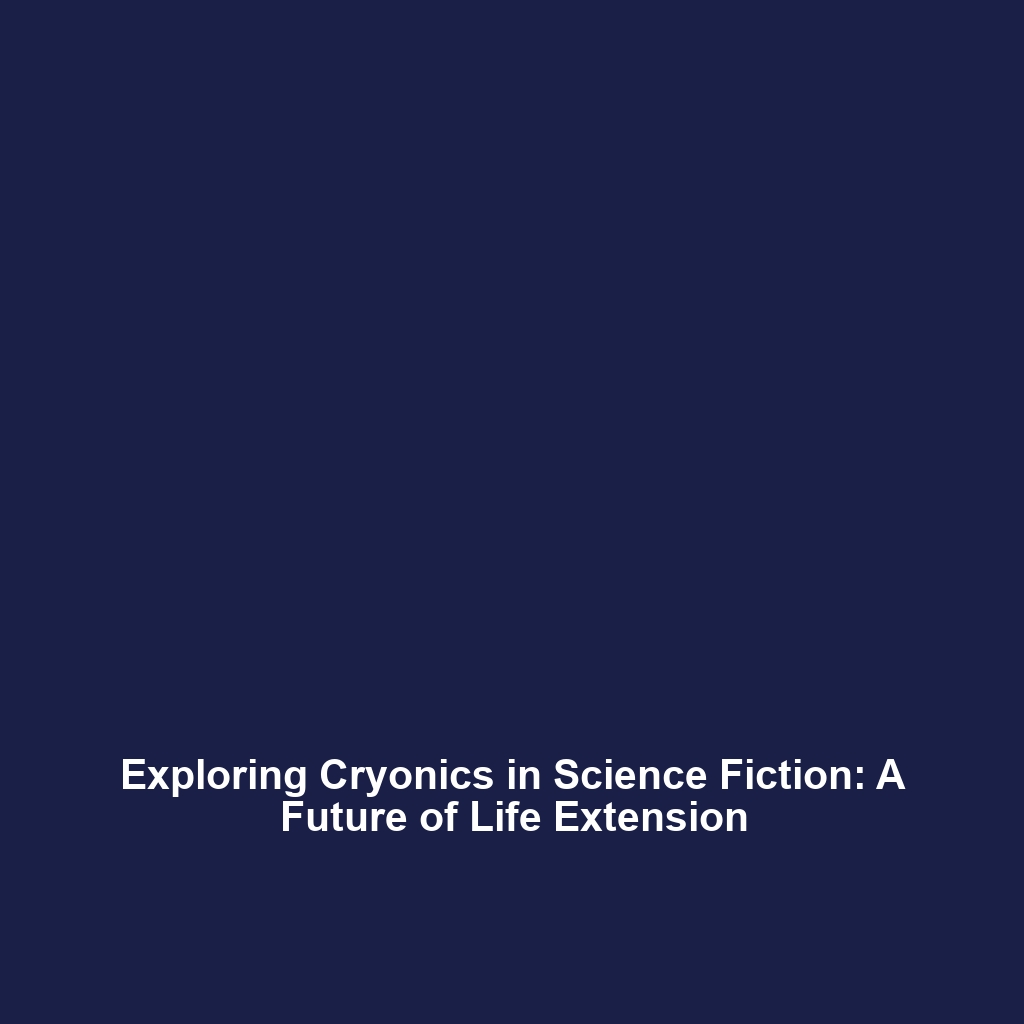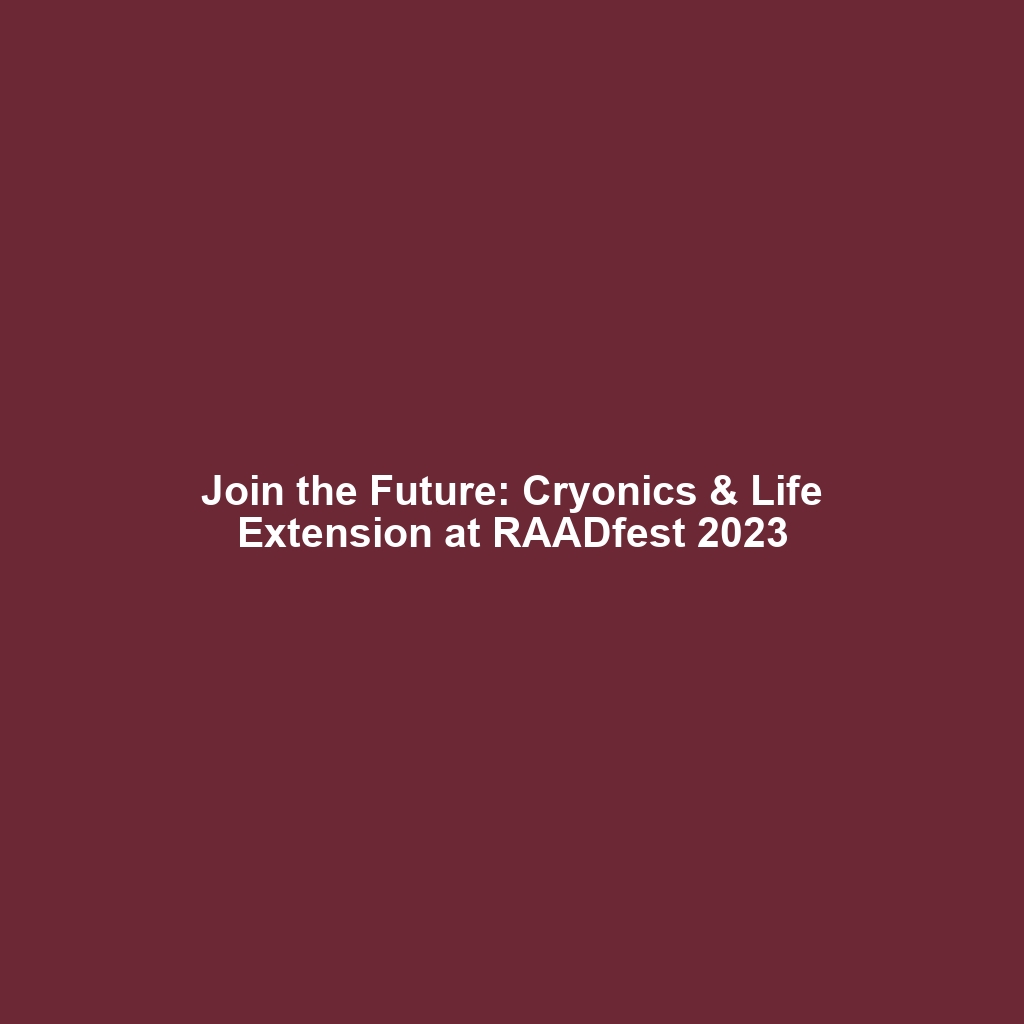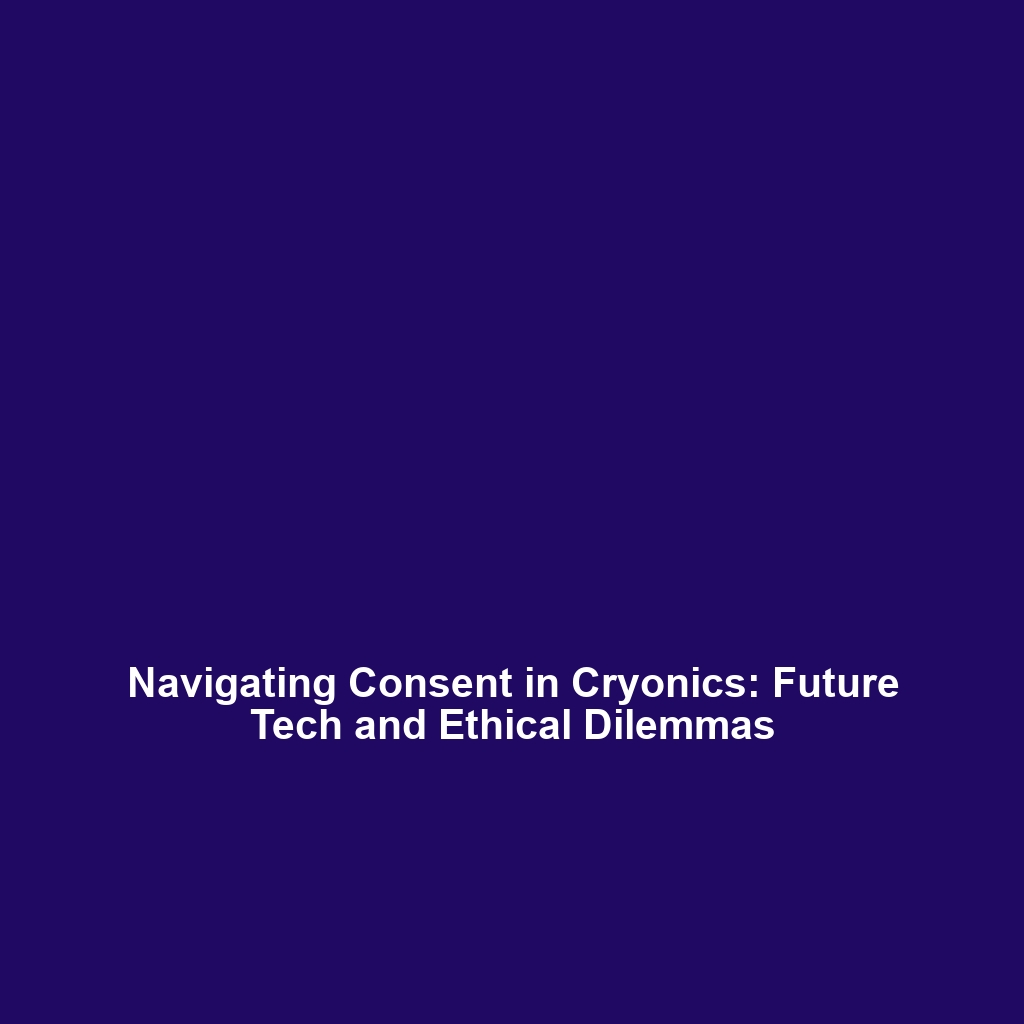Cryonics Institute: Pioneering Affordable Cryopreservation Services
Category: Cryonics & Life Extension
Introduction
The Cryonics Institute stands as a beacon of hope within the rapidly evolving landscapes of Cryonics and Life Extension. Founded by cryonics pioneer Robert Ettinger, this organization offers lower-cost cryopreservation services aimed at preserving individuals at the point of legal death, with the hope of future revival through advanced medical technology. By making cryonics more accessible, the Cryonics Institute plays a crucial role in the ongoing dialogue surrounding life preservation and the science of extending human life.
Key Concepts
The Cryonics Institute operates based on foundational principles that govern the practice of cryonics. Some of the major concepts include:
- Cryopreservation: The process of cooling and storing cells, tissues, or organs at very low temperatures to halt biological processes.
- Vitrification: A method of cryopreservation that transforms biological material into a glass-like state, preventing ice crystal formation that can damage cells.
- Reanimation: The theoretical process of reviving a preserved body in the future when technological advancements permit it.
The Cryonics Institute embodies these concepts, blending scientific innovation with the aspirations of those seeking to transcend the limitations of time. As a leading organization in Cryonics & Life Extension, it highlights the potential benefits of embracing a future where life could be significantly extended.
Applications and Real-World Uses
The practical applications of the Cryonics Institute’s services extend beyond mere preservation. Significant applications include:
- Patient Preservation: Individuals facing terminal illnesses or irreversible medical conditions, seeking an alternative to traditional end-of-life options.
- Life Extension Research: Studies focusing on extending human life through emerging biotechnology, using preserved samples for future analysis.
The developments within the Cryonics Institute exemplify how cryopreservation is used in the broader context of Cryonics & Life Extension. As researchers explore the possibilities of reanimation, the institute remains at the forefront, advocating for continued investment in related technologies.
Current Challenges
Despite the promise that cryonics offers, several challenges currently face the practice:
- Legal and Ethical Issues: The legal status of individuals undergoing cryopreservation remains contentious.
- Scientific Limitations: Current technology does not guarantee successful revival post-cryopreservation.
- Public Perception: The concept of cryonics is often met with skepticism, affecting funding and research opportunities.
These challenges highlight the complexities associated with the Cryonics Institute and the overarching field of Cryonics & Life Extension.
Future Research and Innovations
Ongoing research and innovation are crucial for the growth of the Cryonics Institute and its offerings. Notable areas of focus include:
- Enhanced Vitrification Techniques: Developing methods to further minimize cellular damage during the cryopreservation process.
- Biotechnology Advances: Future breakthroughs in regenerative medicine that could pave the way for reanimation.
- Aging Research: Exploring connections between cryonics and biological aging to extend human longevity.
The ongoing work at the Cryonics Institute reflects a commitment to pushing the boundaries of knowledge in Cryonics & Life Extension.
Conclusion
In summary, the Cryonics Institute represents a key institution in the realm of affordable cryopreservation services, guided by the vision of Robert Ettinger. Its contributions to the fields of cryonics and life extension are invaluable, as they challenge the current understanding of life and death. For those interested in exploring this frontier, further reading on the institute’s methodologies and research initiatives is highly recommended. Visit our related pages for more insights into the evolving world of Cryonics & Life Extension.







